About productionsOur Casks
Wooden casks are of great importance for crafting wine. They would hardly be fully replaced by something else in the future, for over centuries they have been used to store, ferment, mature and transport alcohol beverages. Lactones and tannins – substances present in oak wood – enrich and saturate wine bouquets.
In the 21st century, cooperage remain as much sought-after as it was hundreds of years ago – however, cooper’s labour has changed over the last decades. Owing to the technological progress, a cooper is not an artisan individualist but a team player that co-works with other coopers, and each of them work their own part of the job. Teamwork and division of labour have made it possible to accelerate the production process by order of magnitude.
Despite the fact that The Old Russian Oak cooperage crafts casks following the classic European technology, our coopers use their own developments, ‘signature’ procedures of determination of tannin content, and unique tailor-made machines. These developments and technical characteristics of the machines are our know-how, which is why they may not be disclosed, but we will gladly recount you about everything else.
Barrel Starts with Oak Tree
The Old Russian Oak cooperage crafts wine and brandy casks from 80 to 120-year-old Caucasian (Circassian) durmast oaks (Quercus petraea) with the density of at least four yearly rings per cm. These trees have strong, heavy and hard but at the same time flexible and resilient wood that may easily be cleaved in radial direction. Its moderate gas permeability, watertightness and active interaction with the beverage matured exert considerable impact upon the ageing technology and quality of the alcohol drinks.
The Old Russian Oak cooperage purchases respective forestlands in the Krasnodar region; our experts check the trees for their applicability to winemaking. A thick mountain forest is an ideal place for oak trees suitable for casks. Oaks need company of other trees; otherwise they would take up all soil saps around and stretch out too fast to preserve the quality of their wood.
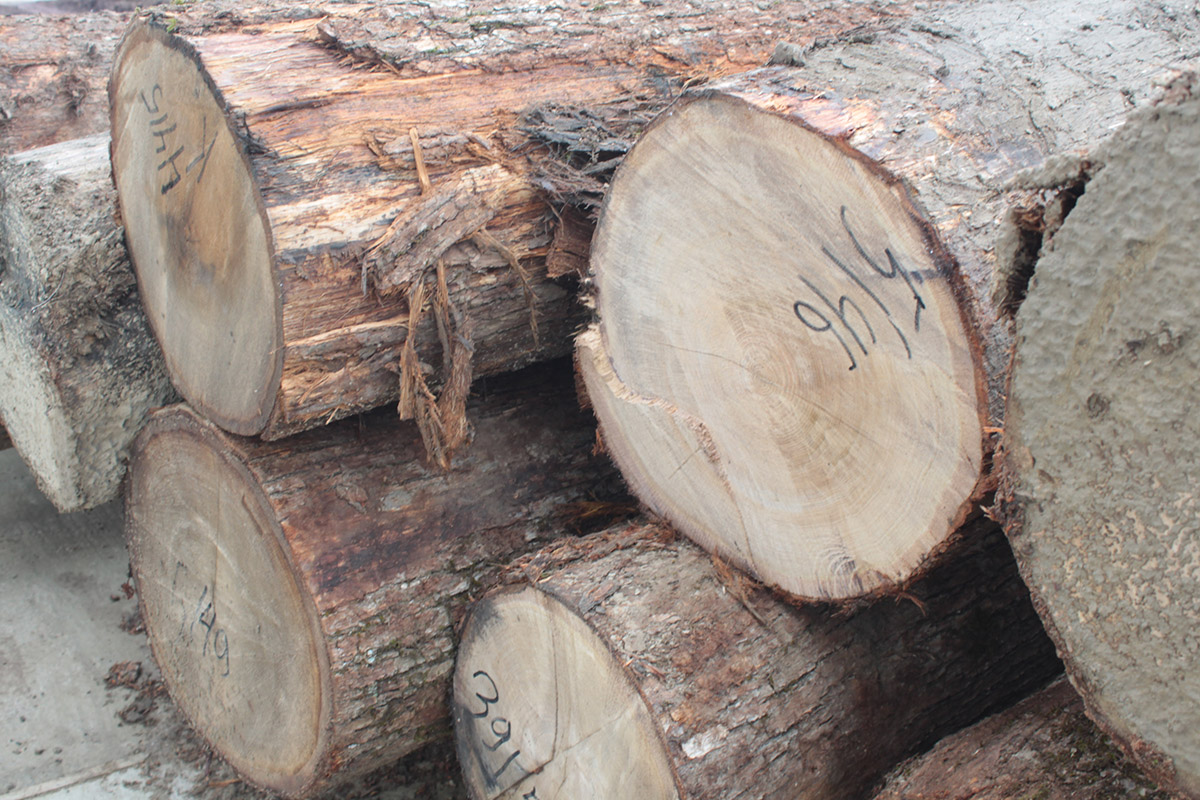
So our experts go to the forest to tick off the trees good for barrels. These must comply with a number of requirements. Tobacco blue mould is one of the main enemies of the coopers. Experienced masters know how to identify it by slightly visible knobs on the trunk. In advanced forms, the mould forms so big swellings that even the laity may notice them. A test felling is performed to check if the wood is healthy – if it is, the sawdust must be bright in colour.
Only the first 4–5 m of the trunk are good for a barrel. Further up, the trees have branches whose composition may negatively affect watertightness of the barrels. Forestry officials register the chosen trees, brand them; then the felled trees are transported to our cooperage in Sennoi.
Stave Is Barrel’s Basis
A stave is billet for the side walls of a wooden tank, a constituent part of future casks. Oak staves may be of two kinds – for wine and for brandy. They are produced by a classic technique of splitting the sectors on a hydraulic cleaver and subsequent sawing off along the medullary rays (stretching from the trunk core to the bark) on log band saws. Using radial sawing, five cubic metres of round logs (sawn down tree trunks without the crown and cleared off the branches and the bark) yield one cubic metre of staves that in their turn may be used to make ten 225-litre oak barrels, aka barriques.
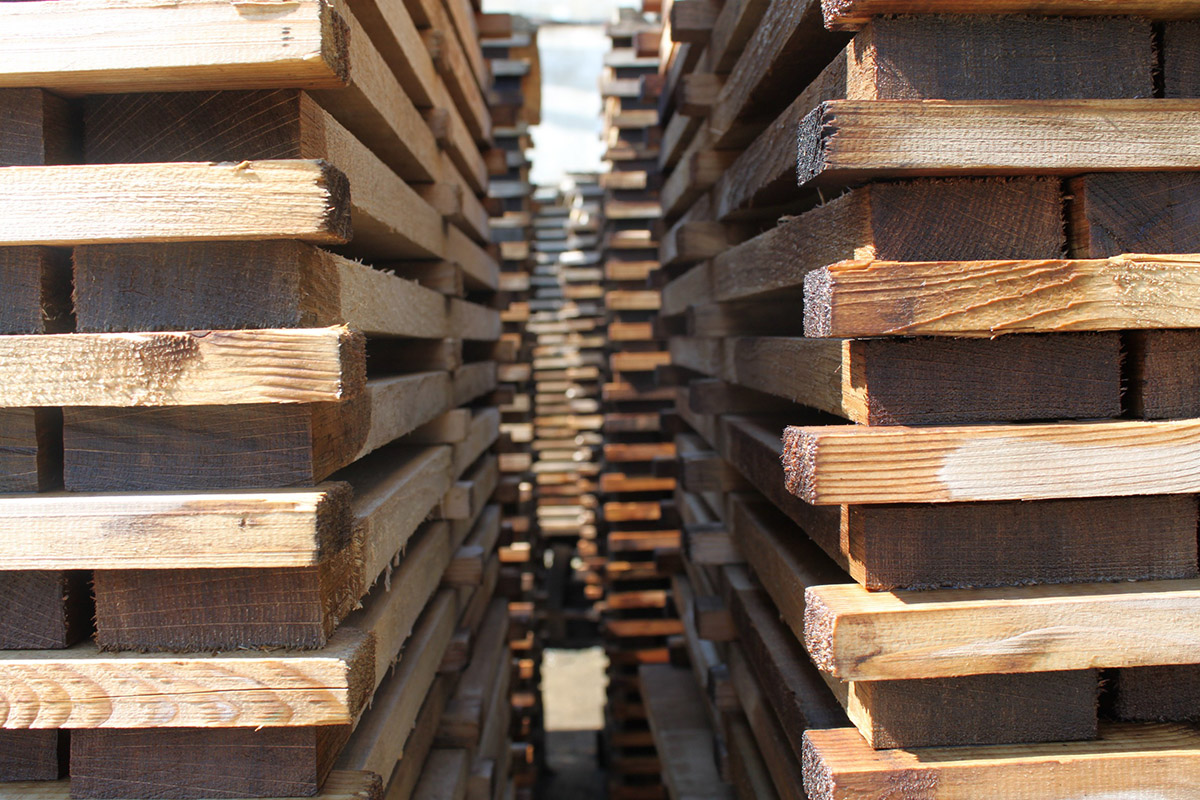
Staves for wine barrels undergo special treatment – open-air 1.5 to 2-year-long natural seasoning. During it, the oak wood gives away very little tannin, which is why at the initial stage of natural seasoning the staves are abundantly flushed with water. It favours the correct course of biochemical reactions and formation of desirable flavours. Staves for brandy barrels are seasoned in drying chambers for 45–60 days.
There are special lathes for every single stave treatment operation – like preliminary surfacing, trimming or acquisition of the required profile.
Unique Cooper’s Equipment
In 2016, the cooperage purchased a jointing machine and a rolling lathe made by Ledinek, Slovenia, the world’s leader in high-level timber processing. These machines have let us considerably increase labour productivity, reduce timber losses and, what is most important, improve the quality and appearance of the oak casks.
Head Cooper Vladimir Prisiazhniuk: “The casks collected from the staves treated by the jointing machine acquire faultless shape and watertightness. Not all may know that each stave is different by its geometric parameters – the angle and the curvature. What is more, it is quite difficult to achieve the needed shape, because a stave narrows towards its ends and broadens in the middle – and these dimensions are unique for each stave.”
The jointing machine allows to make staves with pinpoint accuracy by planning them according to the preset curvature. As far as no nails or grooves are used for the production of wine or brandy staves (the staves are precisely adjusted to each other), absolute watertightness is one of the most important qualities of The Old Russian Oak cooperage that has been rightfully distinguished by our consumers. The new machine also allows to reduce the stave’s width down to 35 mm (compared with 55 mm in the past), which fact also exerts a considerable impact upon the organoleptic characteristics of the beverages matured in these barrels. The rolling lathe is used to perform a precise angle after the rolling of barrel bands.
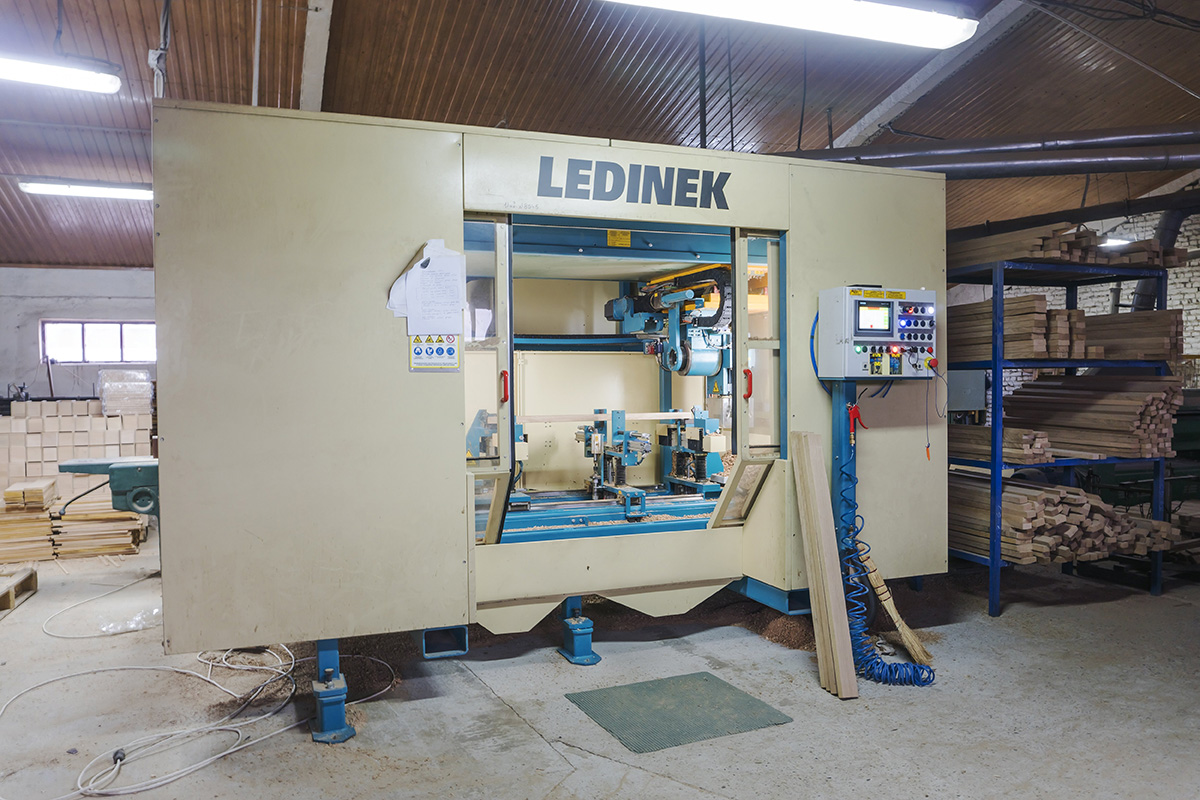
The same year, the cooperage bought a set of machines for small casks: a jointing machine, a vertical cutter, and a multifunctional lathe. These machines allow the cooperage to deal with several production tasks at a time: to broaden the product portfolio (to be used by Fanagoria Winery and beyond), improve labour productivity, and reduce timber losses.
The vertical cutter is equipped with a 45° spindle, allowing to use the entire width of the stave which in its turn makes it possible to use staves of different widths within one barrel. In the past, if the coopers used, say, 60-cm staves, they would have to cut short all staves wider than that to make all staves equal. The vertical cutter lets apply staves of different widths within one cask, which means a more reasonable use of the wood and better cost efficiency of the finished product.
The jointing machine is used for staves jointing (smooth planning).
Bearing in mind that currently the manufacturers tend to produce narrow-use, single-operation machines, our tailor-made multifunctional lathe is unique for Russia. The lathe does five operations: alignment of the frame along the vertical and horizontal axes, cutting of the frame, grooving of barrel chimes (channels for the bottom/head of the barrel), bottom/head calibration to an ideal circle, and grooving of bottom/head chimes.
Toasting Secrets
There may be three kinds of barrel toasting: weak, medium (if necessary, also medium+) and strong. With the help of special braziers, frame toasting process fixes the stave shape, relieves wood strains and provides for tough grip of the staves.
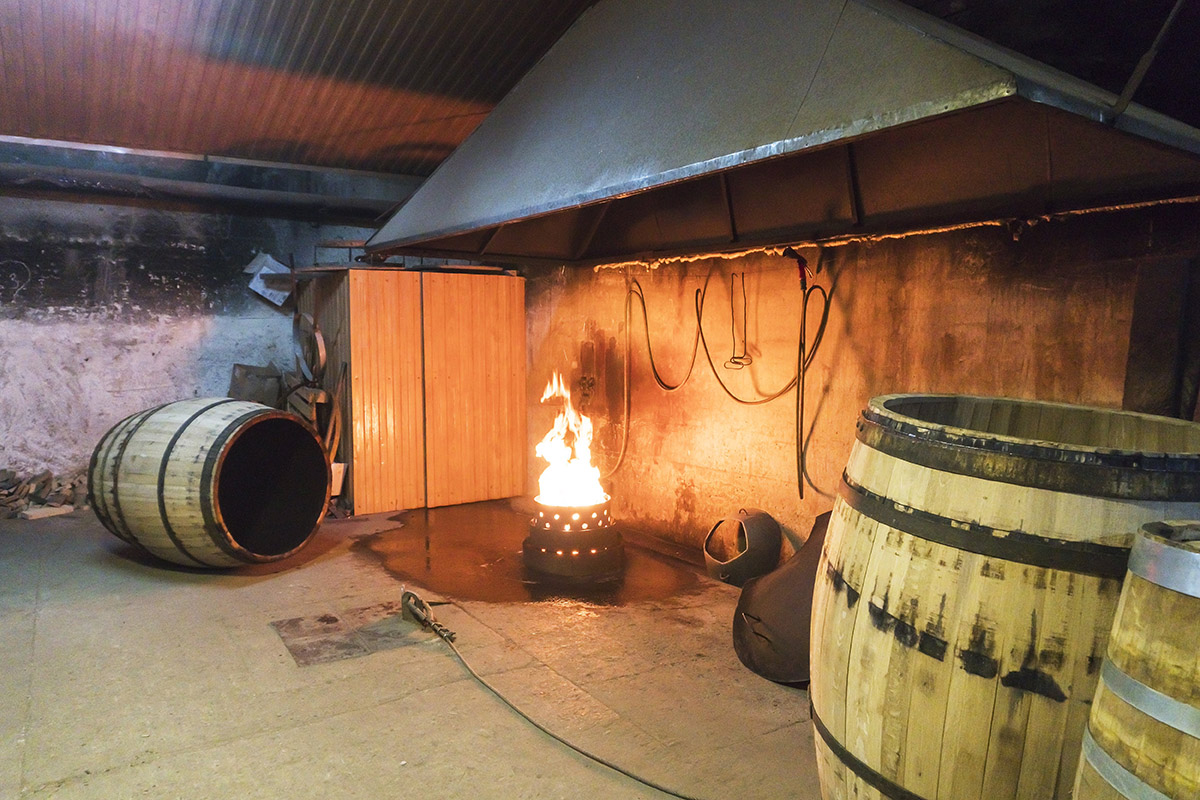
Certain temperatures are needed to provide an adequate reduction of tannins or form chemical extracts in the wood. For instance, medium toasting is the best choice for wines with a nice tannic structure. In this case, the wood remains fresh, adding to the fruity nuances of the wine. Not all barrels used for the maturation of brandy spirits are exposed to toasting.
Oak Barrel Production Process
The frame of the barrel is assembled on a special assembly unit. To bend the lower part of the ‘skirt’, the frame is bent in the following way: the lower part of the frame of what will become a barrel is looped round with a steel rope; a brazier filled with oak chips (partial disposal of the waste) is put inside the frame and burnt up. While the wood heats up, the hoist tightens the loop, so that the staves acquire the needed shape that is fixed with a hoop. Then the barrel undergoes toasting (i.e. once again is exposed to fire treatment).
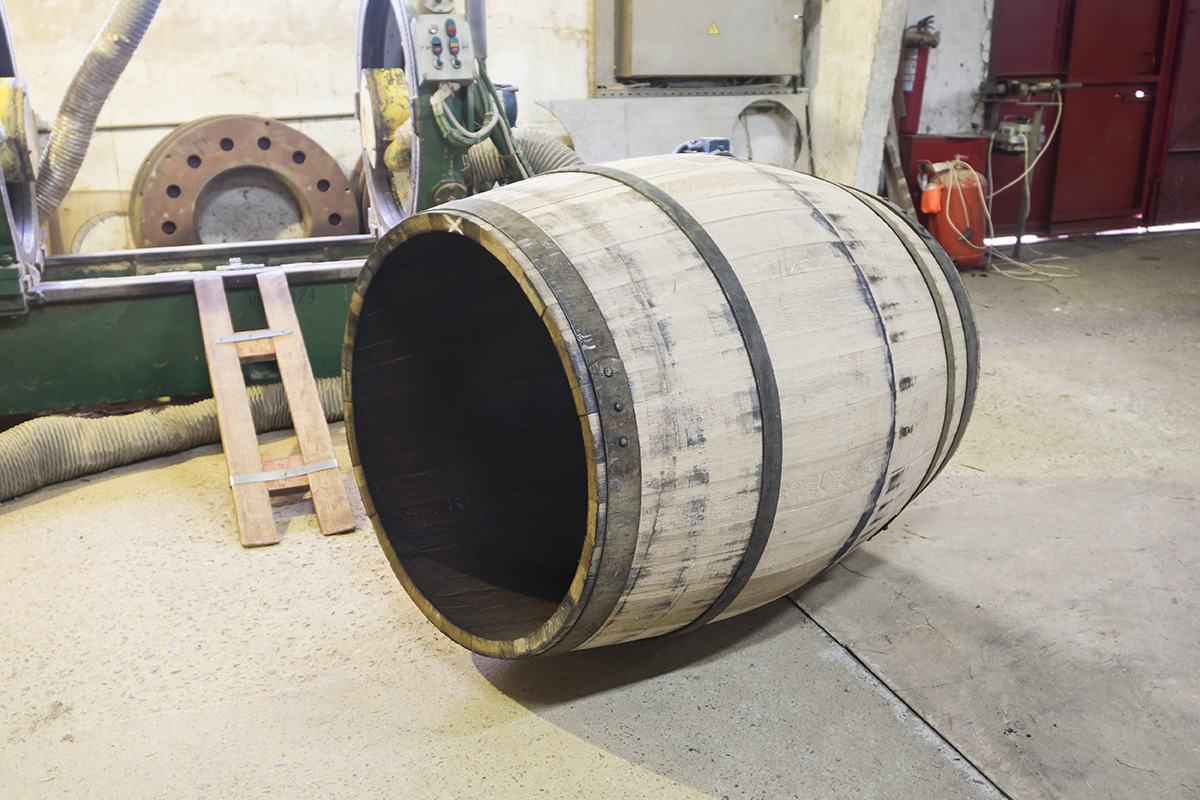
After the toasting and hooping, the barrel is trimmed, and a bevel and a chime groove are made inside it. Then all hoops, except for the two along the head and the bottom, are put on the barrel. The barrel is polished on a special lathe to get the required commercial appearance. Then the remaining hoops are installed, and the bung hole is drilled and toasted.
Barrel Bottom/Head Production Process
The boards to be used for the barrel bottom/head are drilled on the special lathe, made to Fanagoria’s order at a machine-tool plant in Krasnodar. The lathe is equipped with three spindles that allow to drill three holes on one level at a time, making all butt joints ideal.
The boards are joined with dowels. The resulting billet is a strong and tight square shield that is to be cut according to the groove in the barrel. The last thing to do is to bevel the bottom/head so that it can freely fit into the groove.
Oak barrels are known to preserve and multiply the natural advantages of the beverage that is matured in them, but how can barrels themselves be preserved? A wooden cask has one interesting peculiarity – it must be stored filled. Why? How to store it? How long may an oak barrel live? What is to be done if presently there is no wine available, so that there is nothing to fill the barrel with? Look for the answers to these and many other questions in our following article. Don’t miss it please!
Photo by Alexandr Kurganov. Fanagoria oak casks are available at: Fanagoria Estate Winery, 49, Mira St, Sennoi, Temriuk rayon, Krasnodar krai, 353540 – Russia. Tel.: +7 86148 38664.
|